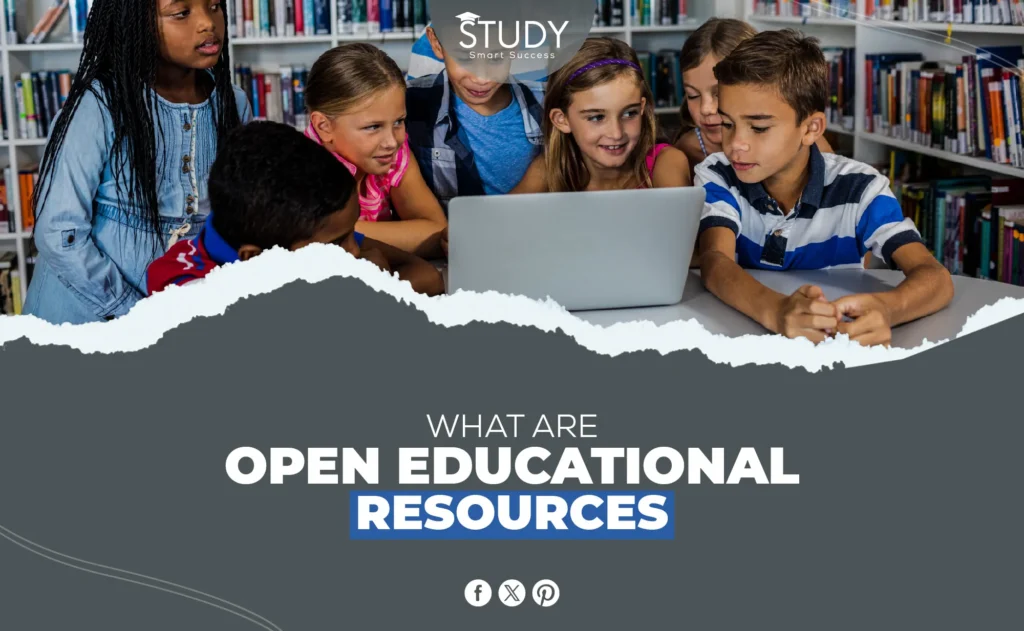Introduction
Are you a student or a teacher who wants to make the most of the chances presented in the classroom while simultaneously reducing your financial outlay? If this is the case, then open educational resources, also known as OERs, can be just what you need! Open Educational Resources (OERs) are learning materials that are made available to the public and can be used to complement lesson plans, expand curriculums, and assist instructors in streamlining their teaching efforts. In addition, their use is safe and lawful, so there is no need to worry about infringing on anyone’s intellectual property rights.
In this article, we will explain what open educational resources (OERs) are, how they may benefit both teachers and students and some pointers on how to get started identifying OERs that are a good fit for your particular requirements. Continue reading to find out more about these forward-thinking technologies and improve the results of your classes right away!
Overview of Open Educational Resources (OER)
In the past few years, Open Educational Resources (OER) have grown to be useful for both students and teachers. OER are online tools that anyone can use for free. They can be anything from textbooks to multimedia files. These tools have made education easier for people who might not be able to afford traditional school supplies.
Open Educational materials (OER) also allow these materials to be changed and customized to fit the needs of different students and teachers. Open Educational Resources are becoming more and more famous, and more people of all ages, fields, and locations will likely use them.
Benefits of Using OERs
Open Educational Resources, or OERs, are helpful for both teachers and students in many ways. Open educational resources (OERs) are great because they are free for everyone to use. This means that there are more tools for learning out there. People who work in education are more likely to share and work together when they use open educational resources (OERs).
This makes the pool of resources bigger and the ways of teaching better. These are called open educational tools (OERs). They can also be changed to fit the needs of a certain classroom. This gives the place where people learn more options. Most of the time, using open educational resources (OERs) is a smart and useful way to make school better and more fair.
Where to Find OERs
Open educational resources (OERs) are becoming more and more popular as teachers and students look for tools that are easy to get and don’t cost a lot of money. But where can these things be found? The good news is that you can find OERs on many sites and in many file types.
There are many OERs out there that anyone can use, such as repositories like OER Commons and Merlot and search tools like Google and Creative Commons. A lot of universities and other educational groups have also put together their collections of OERs, which makes it easy to find resources that are specific to a topic. It might not be hard to find OERs because there are so many to choose from. The hard part might be picking the best ones for your needs.
How to Use OERs in Your Teaching
Everything is easy to find online these days, so teachers have access to a lot of training tools. A lot of people choose open educational tools or OERs. When you use open educational resources (OERs), you can do a lot of different things, from adding individual lesson plans to using whole classes. There are many free and useful ways to use these tools.
Teachers can share their lessons with other teachers around the world. Open educational tools (OERs) also support open education by making sure that all students, no matter how much money they have, can get a good education. Teachers can give each student a personalized, interesting, and friendly learning experience when they use open educational tools (OERs) in their lessons.
Advantages and Disadvantages of Using OERs
Open Educational Resources (OERs) have gotten a lot of attention in the market and education over the past few years. These are tools that can be used for teaching, learning, and research that are open to everyone. One of the best things about open educational resources (OERs) is that they are free, which means that all students around the world can use them to learn. This format also encourages working together and adaptability so students can use learning tools in the best way for them.
On the other hand, the quality and dependability of OERs aren’t always clear, which can cause learning results to be inconsistent. Also, the fact that you need technology to access and share open educational resources (OERs) can make it harder for people who don’t have access to technology or don’t live in places with easy access to it to get a good education. Still, it’s important to think about the pros and cons of open educational resources (OERs) and the possible benefits before switching to this new way of teaching.
Strategies for Making the Most of OERs in the Classroom
Teachers can find a lot of online resources to use these days, like open educational resources (OERs). Teachers like these tools a lot because they are free and simple to use. OERs can be useful in the classroom, but it can be hard to figure out how to use them well. It would be best if you made a plan that fits your goals as a teacher and your students’ wants.
A good plan is to start with easy tools and get better at them as you go. Another choice is to get together with other teachers to find the best open educational tools (OERs) and talk about how to use them. These tips will help teachers get the most out of open educational resources (OERs) in the classroom and make sure their students have a full and fun time learning.
Conclusion
To sum up, open educational tools offer a huge range of resources and chances for both teachers and students. The use of free and open resources (OERs) can help teachers give their students new tools that cover a wide range of topics related to their learning goals without having to spend a lot of money. The need for open educational resources (OERs) has been met by sites that make it easy for teachers and students to find and share what they need. But it would be best if you thought about the good and bad things about OERs before you start using them in your lessons.
Lastly, learning how to find good open educational resources (OERs) could help you use them more effectively in the classroom and involve students in projects where they can work with others. Also, if you use these tools in your lessons more often, you can be sure that your students are always getting good chances to learn. The Open Educational Resources are a great way to get cheap but good things for your classroom. Get to know them now is a great time!
Frequently Asked Questions (FAQs)
Q1: What exactly are Open Educational Resources (OERs)?
Open Educational Resources (OERs) are learning materials that are available to everyone for free and can be used for study, teaching, and learning. They talk about different types of files, like lesson plans, textbooks, classes, and more.
Q2: Where can I find OERs?
There are a lot of places where you can find OERs. A lot of different tools can be found in special places like OER Commons and Merlot. You can also use search tools like Google and Creative Commons to find OERs. There are also sets of OERs that universities and other educational groups make.
Q3: Are all OERs reliable?
There is a range of quality in OER material, but in general, it is pretty good. Before you use any OER, you should make sure that it meets your standards and meets your teaching goals.
Q4: What are the main advantages of using OERs?
OERs give everyone in the world free access to a huge collection of educational materials, encourage students to work together and be flexible, and make sure that everyone has the same chances to learn.
Q5: Are there any downsides to using OERs?
When it comes to OERs, the main problems can be their quality and dependability, as well as the fact that you need to be online to access them. It’s also important to keep in mind that even though OERs are free, there may be costs needed to use them in the classroom.




